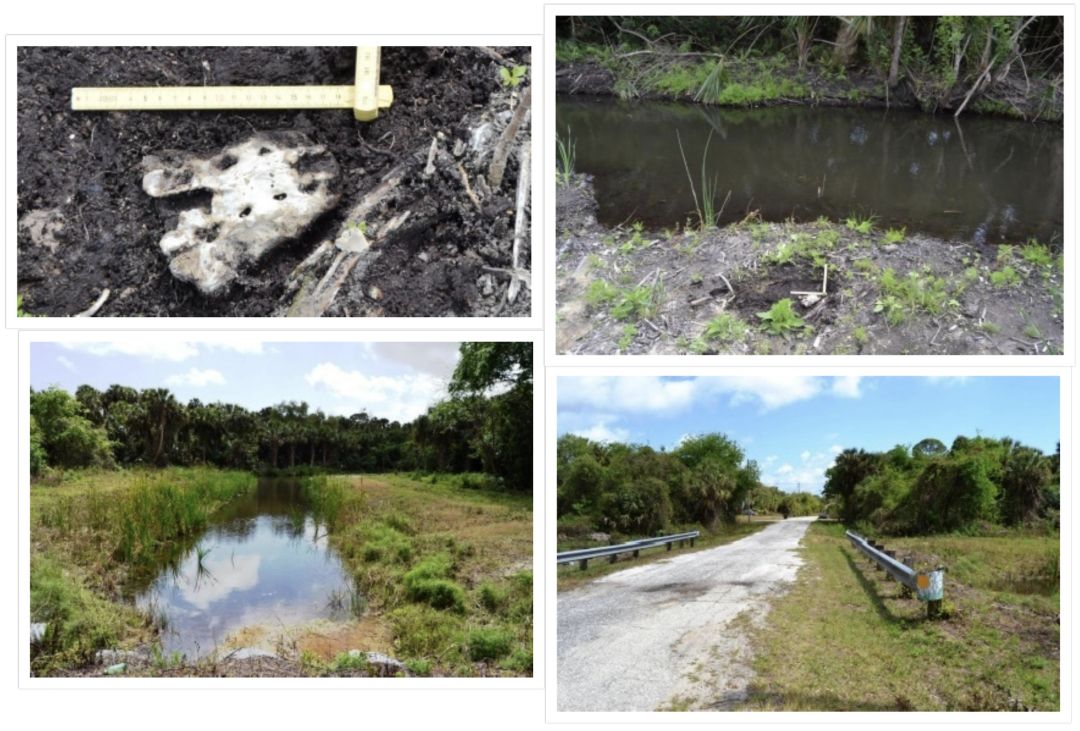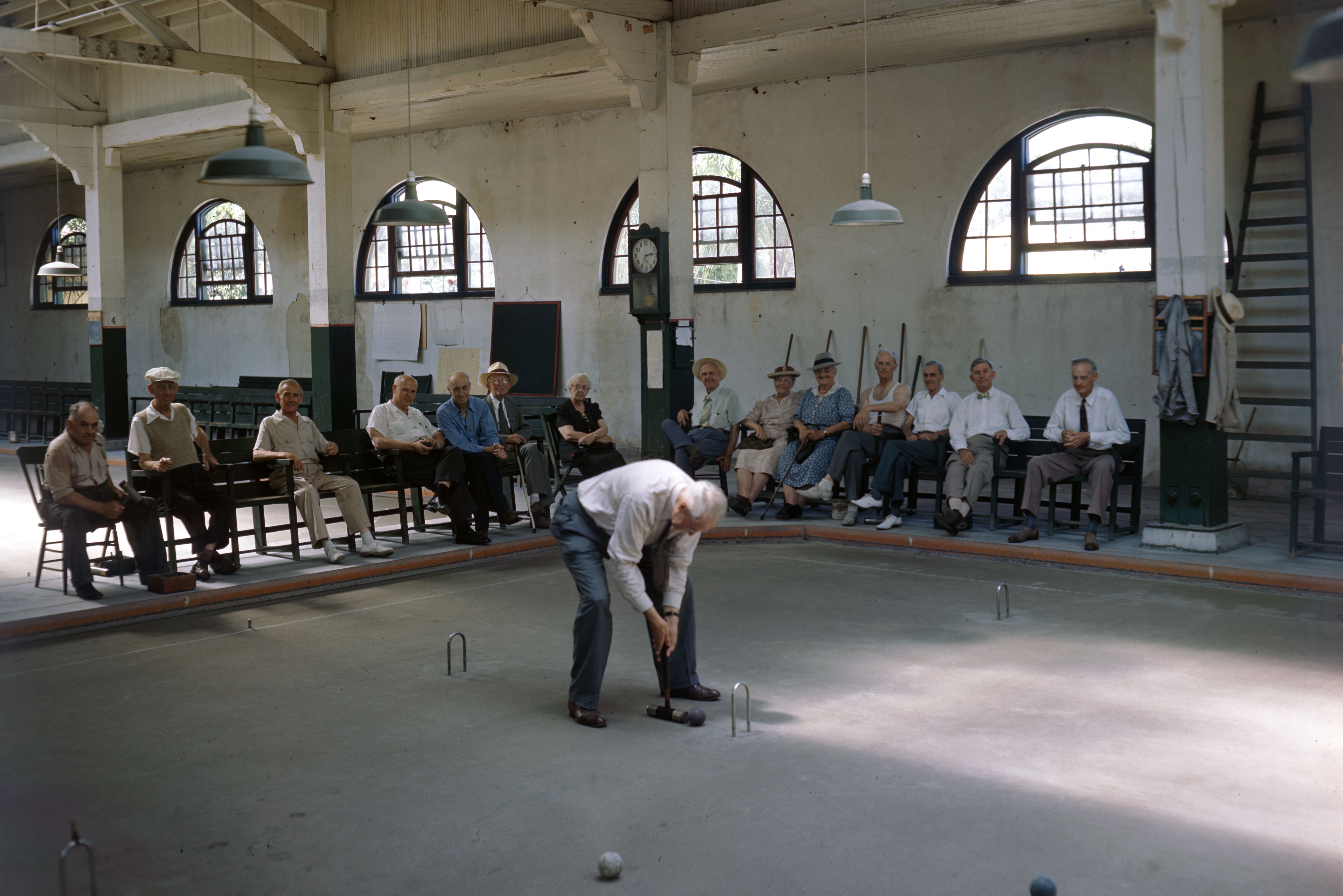North Port May Finally Be Taking Steps to Limit Damage to Prehistoric Sites

Clockwise, from top left: Close-up of a human sacrum, location of the buried sacrum, road crossing near Nona's Site, canal near Nona's Site
Image: Brad Edmondson
Prehistoric Floridians lived and buried their dead at several places that are now within the city of North Port. The marshy sites are large, and burials there spanned thousands of years, making them globally important to archaeologists. For decades, the city of North Port allowed damage to occur to these sites. But things may be changing now, thanks to an ordinary-looking marsh and a small group of activists.
The marsh is called Nona’s Site and is on private land. In the early 1960s, decades before laws were passed prohibiting the practice, The General Development Corporation dredged a canal through the marsh, disturbing Nona’s gravesites. Nona has not been studied as extensively as its famous neighbors, Warm Mineral Springs and Little Salt Spring. But it has been on the state’s list of archaeological sites that contain unmarked human remains for several decades, along with 65 other places in Sarasota County.
In 2015, workers from the city public works department re-dredged the canal, again disturbing the remains in violation of local, county, state and federal laws. Bill Goetz, who is active in the local archaeology group Friends of Little Salt Spring, discovered the damage and brought the mayor, the police chief, Sarasota County archaeologist Steven Koski and Jonathan Lewis, who was city manager at the time (and is county administrator now), to see human bones lying on the ground. Koski submitted a report recommending that city workers use only hand equipment when working near archaeological sites. He also re-buried the bones. Five weeks later, the city sent heavy mowing equipment down the canal right-of-way and messed up the site even more.
Archaeologist George Luer, who worked on a team that discovered the 6,000- to 7,000-year-old remains and artifacts at Nona in 1983, recommended in a 2002 paper that the city preserve Nona. “Despite the destructive impacts, Nona’s Site may still contain intact deposits,” he says.
Goetz kept quiet about the 2015 episode until April 2018, when city drainage crews cleared away a mass of wood on Myakkahatchee Creek that may have once been a dock for an historic turpentine camp. He started talking to reporters and several of his friends became active, too; they posted a video and showed up at a city commission meeting to express their displeasure. The heat caused the commission to suspend creek-clearing activity, and perhaps it also changed some commissioners’ minds.
A few weeks later, city road crews returned to Nona’s Site to replace a culvert. This time they brought a consulting archaeologist, Bill Burger, who made sure they didn’t go anywhere near the graves. “I think they did a first-class job,” Burger says. But the site is still unmarked, and Burger says it needs to be posted to ensure that future crews don’t make the mistake they made three years ago.
North Port Mayor Vanessa Carusone, who took office in 2017, says that city employees simply don’t know the locations of burial sites. “North Port is growing so rapidly, and there is so much turnover. We just haven’t caught up to this,” she says. Making an inventory of the city’s historic and archeological resources is one of her top priorities for this year, she says.
Luer says that a complete survey of Nona’s Site is still needed. “Careful scientific work at Nona’s could still yield information of local and wider significance,” he says. “By knowing where such deposits are located, the city can manage the site better and avoid further destructive impacts.”



